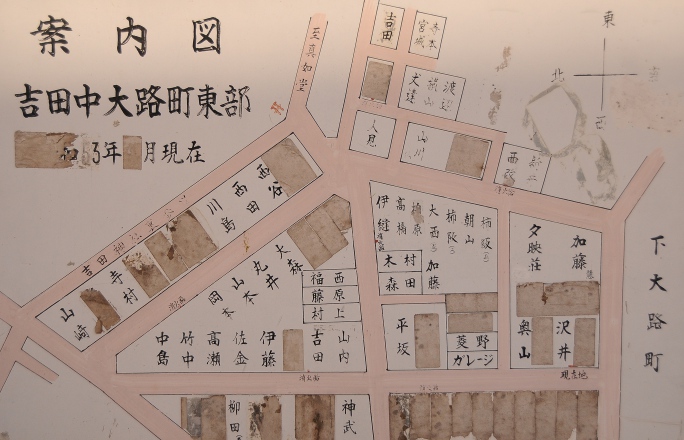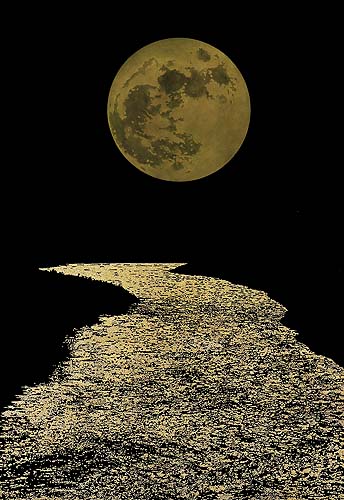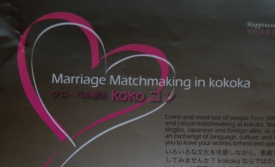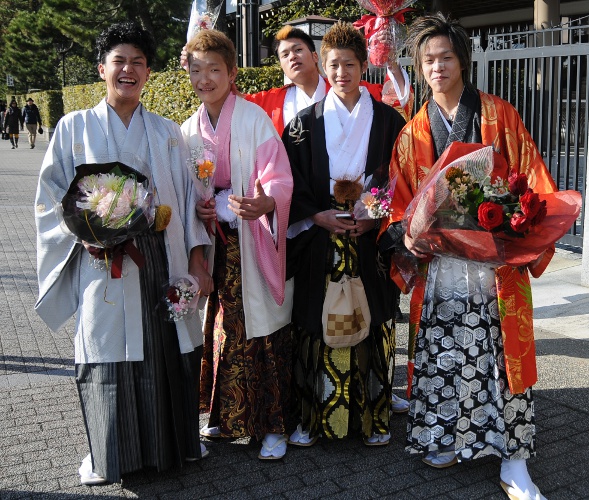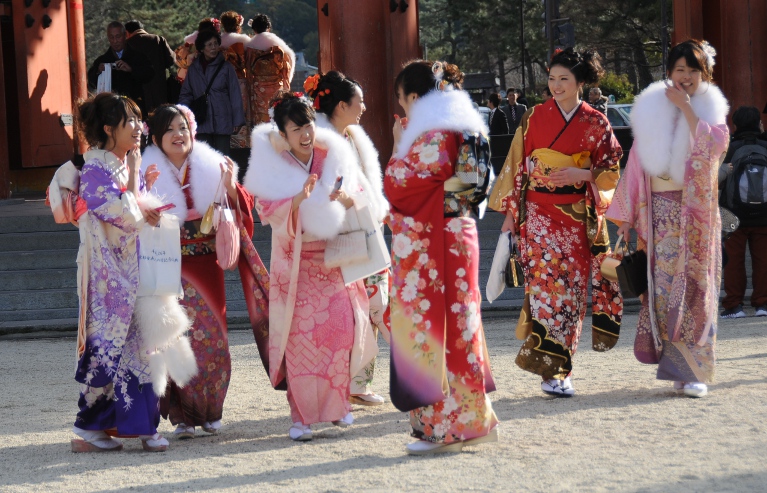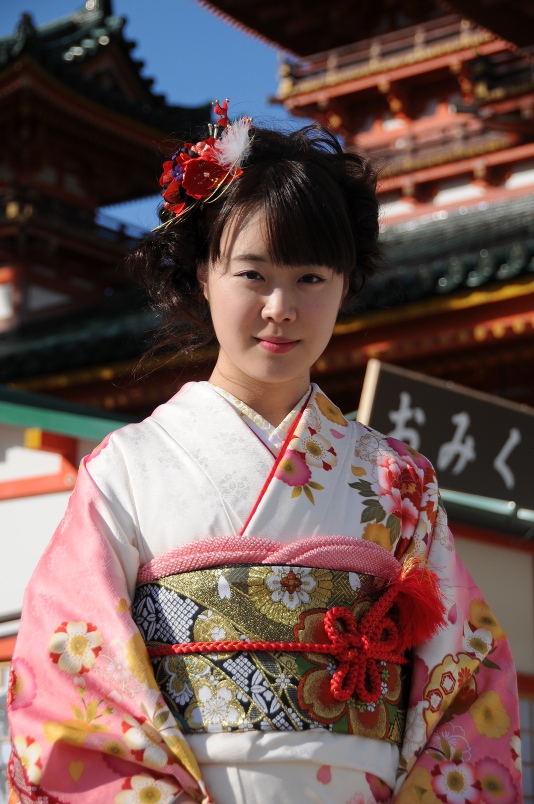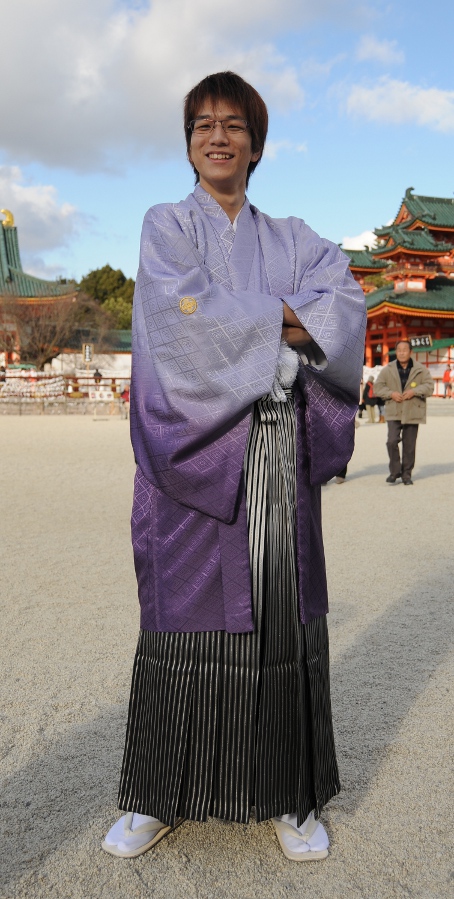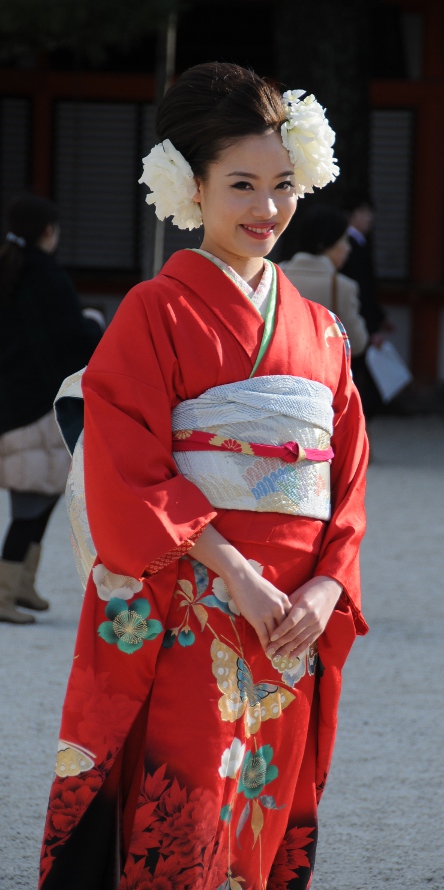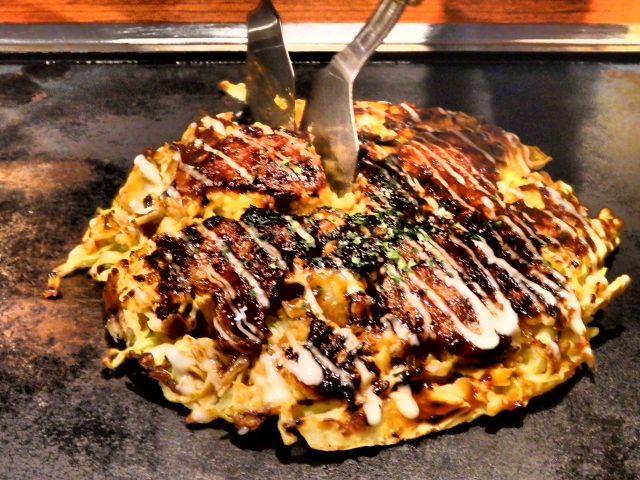Allow me to deviate a little from the usual weekend post format of “general interest”, because I’d like to tell you about the absolute glorious day it was today. Come, follow me…
I woke up at 7:30, much earlier than usual. It was completely quiet and I could see this silvery-white gleam through the window, which can only mean one thing:
SNOW
Let me admit that I am a very odd creature: I like it hot and hate being cold, I even try to avoid going out when it rains. At the same time I love when it snows and when there is fresh snow on the ground, as yet undisturbed, it awakens the little kid in me and from then on, the adrenaline starts rushing and resistance is futile…
Hence, I was out and about 15 minutes later. No breakfast, no brushing of teeth, I’m not even sure I combed my hair. I went to the other side of the hill to Shinyodo temple – and was actually quite upset that I had come too late – people were already starting to clear the paths. 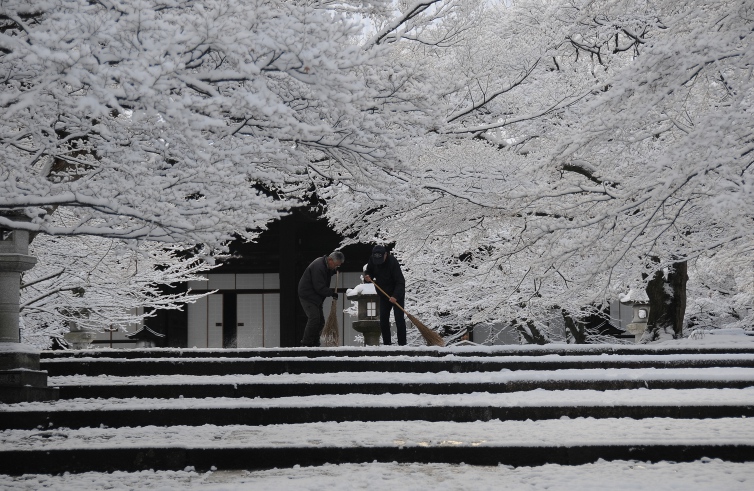 I went around the temple grounds through the ginsekai, the silver world as the Japanese call it, to take photos.
I went around the temple grounds through the ginsekai, the silver world as the Japanese call it, to take photos. 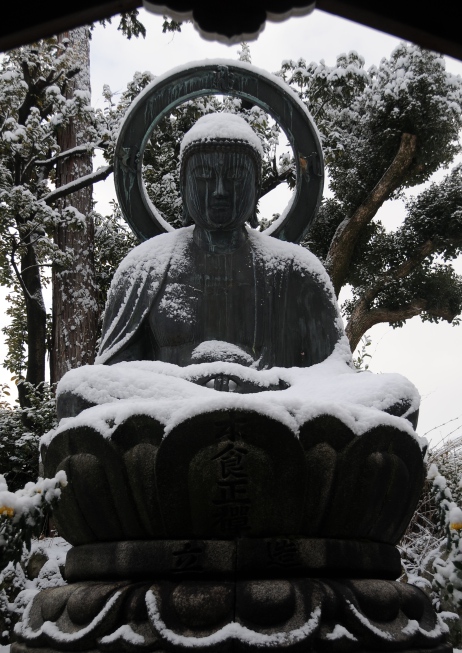
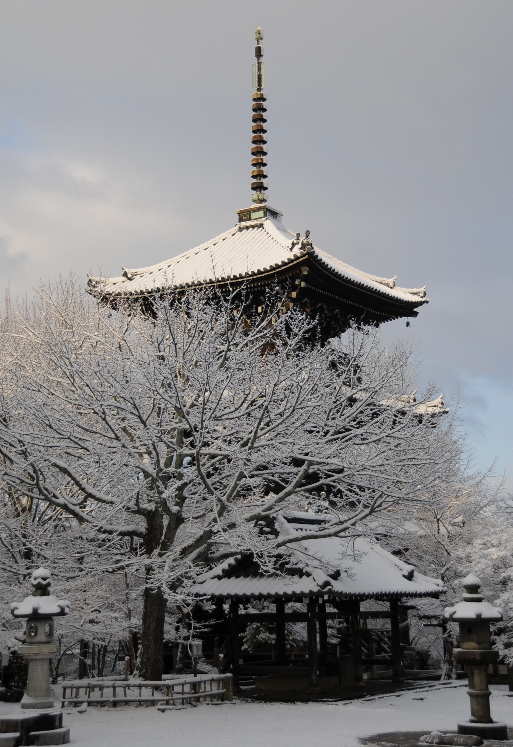 The sun came out on occasion, but most of the time it was overcast. At some point, I started talking to an elderly lady about the snow and Japan and Austria… and she spontaneously invited me to a tea ceremony that took place in the temple. I told her I was not dressed appropriately, but she insisted, and even paid for me. So, I ended up sitting there in the beautiful (but unheated) tearoom with the gorgeously painted fusuma (300 years old or so) among the men in suits and women in kimono with my old faded jeans, four layers of T-shirts, and possibly unkempt hair, and felt totally out of place and was constantly worried of making a mistake – which was unavoidable because it was my very first tea ceremony… I guess life would be boring if you were always prepared. In the end, I got permission to take some photos of the Japanese garden surrounding that particular building – a privilege you usually have to pay for. Note the “borrowed landscape” in the background with the daimonji:
The sun came out on occasion, but most of the time it was overcast. At some point, I started talking to an elderly lady about the snow and Japan and Austria… and she spontaneously invited me to a tea ceremony that took place in the temple. I told her I was not dressed appropriately, but she insisted, and even paid for me. So, I ended up sitting there in the beautiful (but unheated) tearoom with the gorgeously painted fusuma (300 years old or so) among the men in suits and women in kimono with my old faded jeans, four layers of T-shirts, and possibly unkempt hair, and felt totally out of place and was constantly worried of making a mistake – which was unavoidable because it was my very first tea ceremony… I guess life would be boring if you were always prepared. In the end, I got permission to take some photos of the Japanese garden surrounding that particular building – a privilege you usually have to pay for. Note the “borrowed landscape” in the background with the daimonji: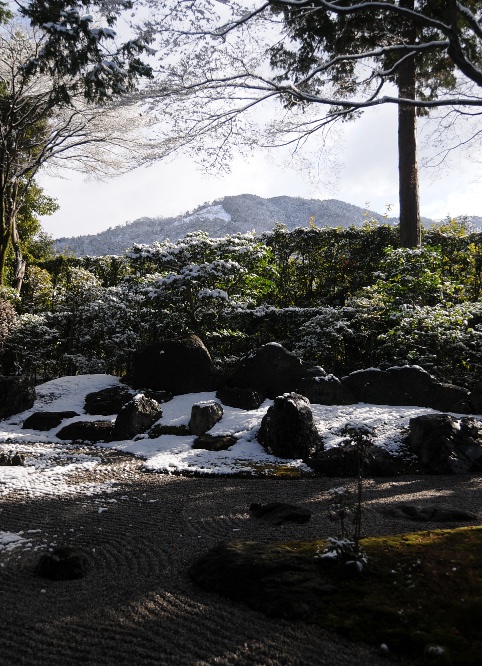 Afterwards, I went down to Heian shrine. It was quite late, and the sun was shining much stronger by then, so much of the snow was gone already.
Afterwards, I went down to Heian shrine. It was quite late, and the sun was shining much stronger by then, so much of the snow was gone already. 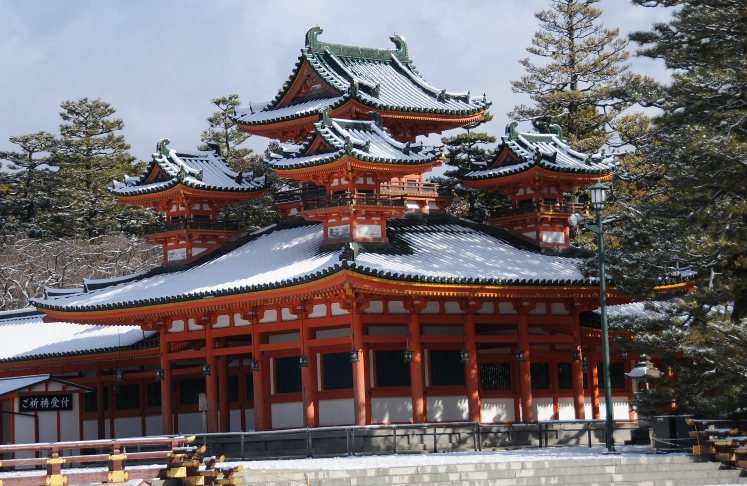 Anyway, I decided to go to the shrine gardens and see if there was still the opportunity for taking decent pictures. Yes, there was, but the sun caused much of the exposed parts to be dripping already, and the ones where there was still snow were often too dark to take decent photos. I tried my best anyway.
Anyway, I decided to go to the shrine gardens and see if there was still the opportunity for taking decent pictures. Yes, there was, but the sun caused much of the exposed parts to be dripping already, and the ones where there was still snow were often too dark to take decent photos. I tried my best anyway. 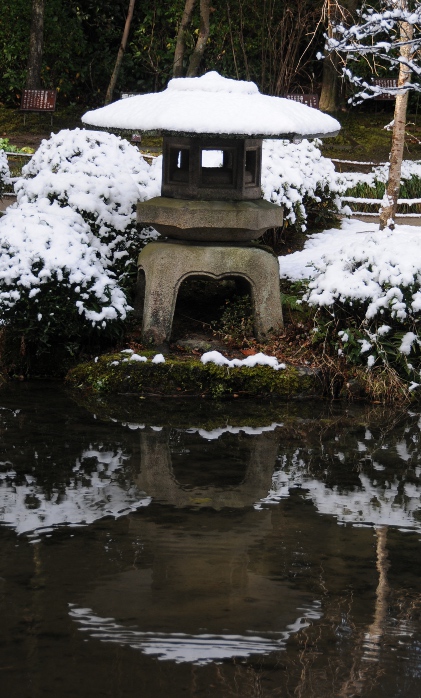
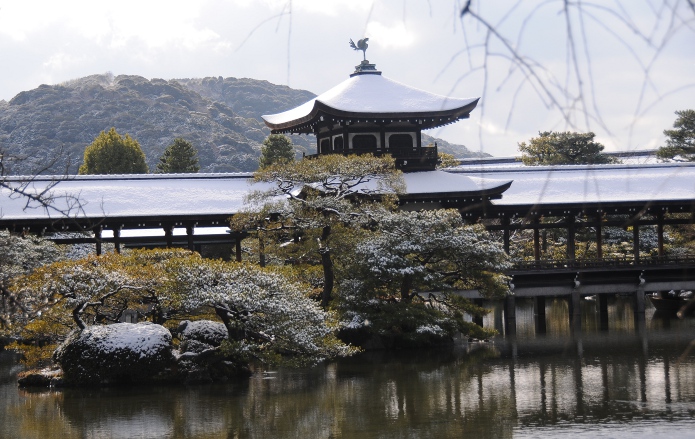 The best part of the Heian gardens, however, pictures of which I promised not to share so I have to leave that to your imagination, was: A newly wed couple in the clothes appropriate for a shinto wedding had their pictures taken in the gardens… They allowed me to take pictures too, and I can assure you that both of them looked stunning. The groom wore a traditional kimono-hakama-haori ensemble in black and white, while the bride was clad in an all white kimono with a white coat over it that was embroidered with cranes – a sign of good luck. In the end, when she took off her white watabōshi hood she revealed a coiffure with lots of hairpins which I have so far only seen geisha wearing. It was splendid.
The best part of the Heian gardens, however, pictures of which I promised not to share so I have to leave that to your imagination, was: A newly wed couple in the clothes appropriate for a shinto wedding had their pictures taken in the gardens… They allowed me to take pictures too, and I can assure you that both of them looked stunning. The groom wore a traditional kimono-hakama-haori ensemble in black and white, while the bride was clad in an all white kimono with a white coat over it that was embroidered with cranes – a sign of good luck. In the end, when she took off her white watabōshi hood she revealed a coiffure with lots of hairpins which I have so far only seen geisha wearing. It was splendid.
By that time, I was completely elated – and freezing, so I decided to return home. I went past the Budokan and just wanted to sneak a peak at the archery range to see if there was any training – there wasn’t – but there was Aikido training in the main hall, which I just had to see. I got the dojo’s address, so I may go and watch normal training there some time soon. 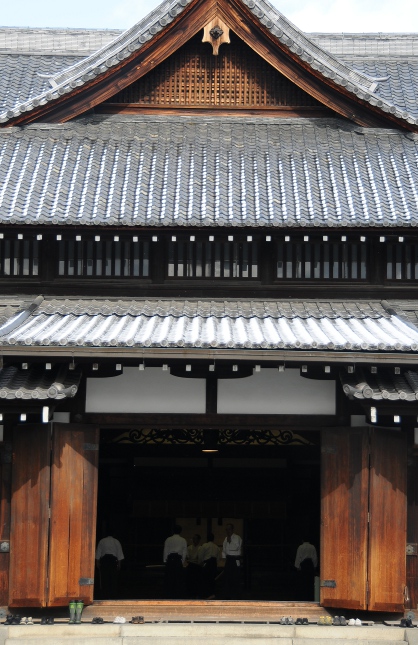 Finally, I bought some sushi for dinner – a perfect ending for a perfect day.
Finally, I bought some sushi for dinner – a perfect ending for a perfect day.
And all that because of a little bit of snow (which has melted by now, sadly…)

